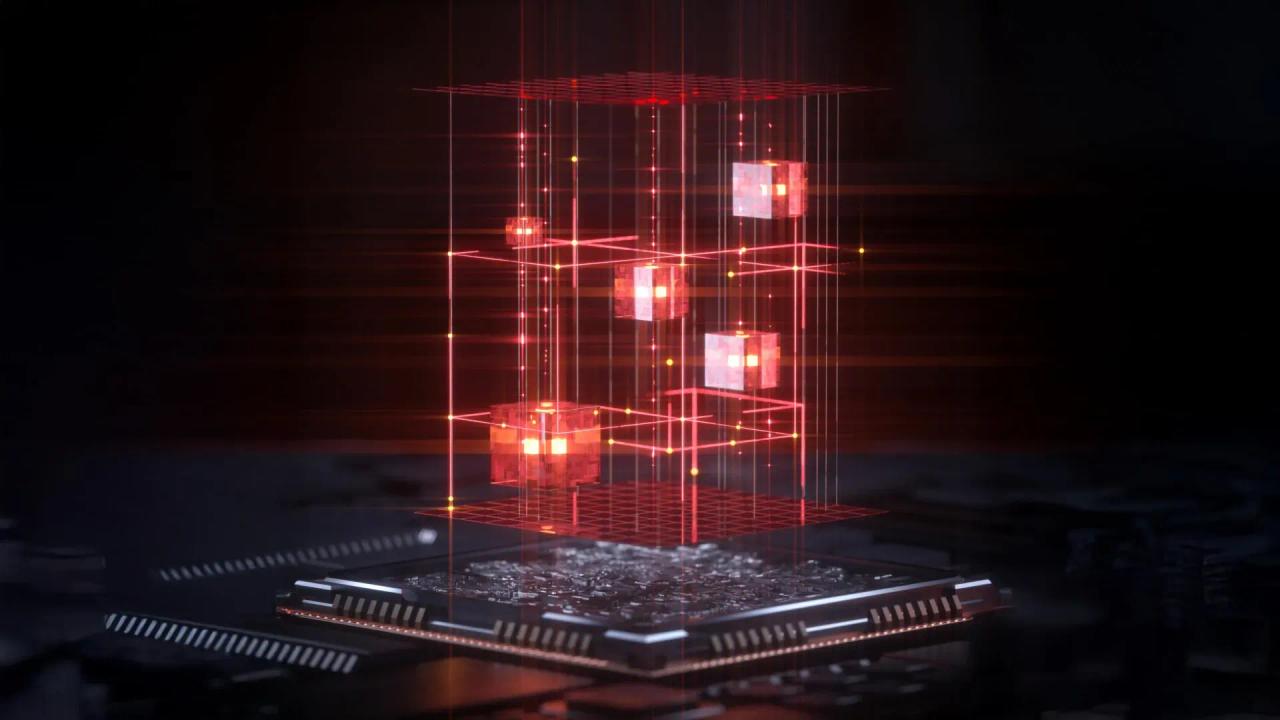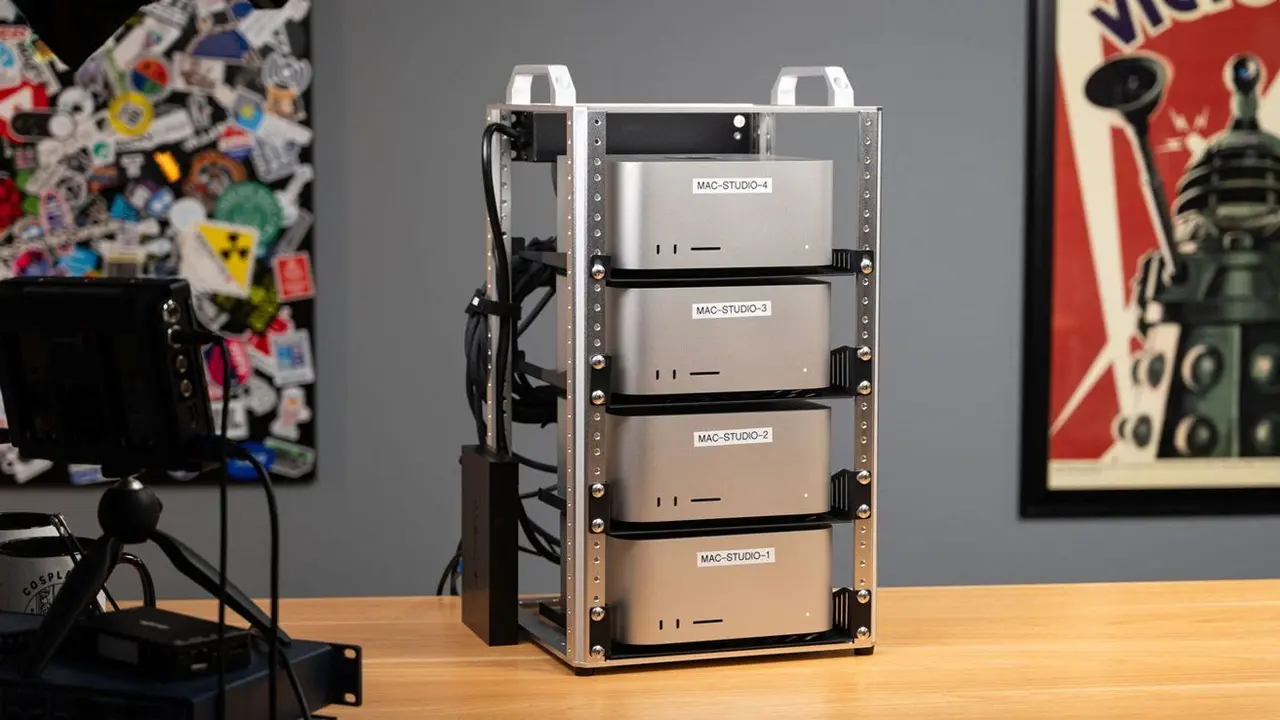Microsoft's Analog Optical Computer: A Leap Towards Efficient AI and Problem-Solving
3 Sources
3 Sources
[1]
Microsoft shows off its latest Analog Optical Computer
Microsoft researchers in Cambridge have unveiled its latest iteration of an Analog Optical Computer (AOC) and have inevitably incorporated AI into the technology's capabilities. The AOC harnesses light as a medium for solving complex problems, notably optimization challenges found in the worlds of logistics, finance, and healthcare. It uses different light intensities to perform operations such as addition and multiplication. It's also considerably faster at certain problem-solving activities than traditional computers, we're told. The prototype is built from commercially available parts, including micro-LEDs, optical lenses, and sensors from smartphone cameras. Since the underlying technology - shunting photons along fiber optic cables - is decades old, much of the hardware does not need to be expensively exotic. While the aim is for a durable and practical machine that can operate at room temperature, and yet still be 100 times faster and 100 times more energy efficient when solving certain problems than conventional hardware, it's highly unlikely to be appear on a desktop anytime soon. Francesca Parmigiani, the Microsoft principal research manager who leads the team developing the AOC, said the system is "not a general-purpose computer, but what we believe is that we can find a wide range of applications and real-world problems where the computer can be extremely successful." The machine has 256 weights, up from the 64 of the previous generation. "More weights mean the capacity to solve more complex problems," Microsoft said. "As researchers refine the AOC, adding more and more micro-LEDs, it could eventually have millions or even more than a billion weights." Microsoft has also shared its "optimization solver" algorithm and its digital twin, allowing other researchers to explore the company's ideas and propose new problems to solve, as well as suggest ways to address them. At present, Microsoft's researchers are very excited about clinical applications, such as reconstructing MRI scans, and financial applications. Microsoft is involved with Barclays Bank to deal with the optimization challenges faced by clearinghouses when working out the most efficient way to settle financial obligations between multiple parties. And then, of course, there is AI. "Because of the way the AOC operates, computing a problem again and again in search of a 'fixed point,' it has the potential to do a kind of energy-demanding reasoning that current LLMs running on GPUs struggle with - state tracking - at a much lower cost in energy," Microsoft said. Hitesh Ballani, who directs research on future AI infrastructure at the Microsoft Research lab in Cambridge, reckons the tech has the potential to be a game changer, but cautioned that there remains a steep hill to climb before it can move from the lab to something commercially viable. "We've been able to convince ourselves and hopefully a broader segment of the world that, well, actually, you know what? There are real applications for the AOC," he said. Microsoft is not the only company working in optical computing. IBM, for example, has talked up research into co-packaged optics to replace electrical interconnects in datacenters to bump up performance for computing applications. Other proposals and research around analog optical computing have previously shown up in publications such as Nature over the years. The Microsoft team reckons future generations of the AOC will be created every two years and envisions the device finding its way into the racks of an Azure datacenter. ®
[2]
Microsoft's new light-based computer inspired by 80-year-old technology -- it could make AI 100 times more efficient
A computer that uses light for its calculations could make future AI more energy efficient, according to a new study. (Image credit: Chris Welsch for Microsoft.) A computer that uses light rather than digital switches for calculations could help reduce the energy demands of artificial intelligence (AI), according to a new study. The scientists who invented the computer describe it as a new computing paradigm. Microsoft researchers developed a prototype analog optical computer (AOC) that can perform some tasks that an AI might be used for, as well as optimization problems. The new computing system could one day solve certain problems faster and with less energy than modern digital computers are capable of, the scientists wrote in the study, published Sept. 3 in the journal Nature. "The most important aspect the AOC delivers is that we estimate around a hundred times improvement in energy efficiency," study co-author Jannes Gladrow, an AI researcher at Microsoft, said in a Microsoft blog post. "That alone is unheard of in hardware." In the new study, Microsoft researchers built a computer that uses micro-LEDs and camera sensors to perform calculations. Unlike regular digital computers, which flip billions of tiny switches to perform calculations, the new system uses light and voltage of different intensities to add and multiply numbers in a feedback loop. The AOC computes a problem many times, each time improving on the last, until it reaches a "steady state," or final solution. Related: 'Quantum AI' algorithms already outpace the fastest supercomputers, study says Because the AOC doesn't convert the analog signals to digital ones during the calculations, the AOC saves energy and overcomes some of the speed limitations inherent in digital computing. This specialized computation method "makes it a special-purpose "steady-state finder" for certain AI and optimization problems, not a general-purpose computer," Aydogan Ozcan, an optical computing researcher at UCLA who was not involved in the research, told Live Science in an email. But for those specific purposes, the AOC could offer significant improvements over digital computing, the researchers wrote in the study. The team also programmed a "digital twin" -- a computer model that mimics the physical AOC's computations. This digital twin can be scaled up to handle more variables and more complex calculations. "The digital twin is where we can work on larger problems than the instrument itself can tackle right now," Michael Hansen, senior director of biomedical signal processing at Microsoft Health Futures, said in the blog post. The team first had the AOC run some simple machine learning tasks, such as classifying images. The physical AOC performed about as well as a digital computer. A future, larger AOC that can handle more variables could quickly outclass a digital computer in energy efficiency, the team wrote. Then, the researchers used the AOC digital twin to reconstruct a 320-by-320-pixel brain scan image using just 62.5% of the original data. The digital twin accurately reproduced the scan -- a feat the scientists say could lead to shorter MRI times. Finally, the team used the AOC to solve a series of financial problems that involved finding the most efficient way to exchange funds between multiple groups while minimizing risk -- a challenge that clearinghouses face daily -- with a higher success rate than existing quantum computers. For now, the AOC is a prototype. But as future models add more micro-LEDs, the machines could become much more powerful, computing with millions or billions of variables at a time. "Our goal, our long-term vision is this being a significant part of the future of computing," Hitesh Ballani, a researcher in Microsoft's Cloud Systems Futures team, said in the blog post.
[3]
Microsoft's light-powered computer could run AI 100x faster
A detail of the analog optical computer at the Microsoft Research lab in Cambridge, U.K. Microsoft Research has built a prototype computer that doesn't rely on electrons zipping through silicon but on beams of light. The machine, called an analog optical computer (AOC), is designed to solve complex optimization problems and could one day handle artificial intelligence workloads with far greater speed and efficiency than today's processors. Unlike digital computers that crunch information in binary, the AOC embodies computations in physical systems. This avoids bottlenecks that slow down conventional chips and could make the system 100 times faster and more energy-efficient at specific tasks.
Share
Share
Copy Link
Microsoft unveils its latest Analog Optical Computer, promising significant improvements in speed and energy efficiency for AI and optimization tasks. The light-based technology could revolutionize computing in various fields.
Microsoft's Groundbreaking Analog Optical Computer
Microsoft researchers in Cambridge have unveiled their latest iteration of an Analog Optical Computer (AOC), a revolutionary technology that harnesses light to solve complex problems
1
. This innovative approach to computing promises significant advancements in speed and energy efficiency, particularly in the realms of artificial intelligence (AI) and optimization tasks.
Source: Interesting Engineering
How the AOC Works
Unlike traditional digital computers that rely on binary calculations, the AOC uses different light intensities to perform operations such as addition and multiplication
1
. The prototype is built using commercially available parts, including micro-LEDs, optical lenses, and sensors from smartphone cameras1
. The system computes problems iteratively, improving upon each calculation until it reaches a 'steady state' or final solution2
.
Source: The Register
Potential Applications and Advantages
The AOC shows promise in various fields:
-
Artificial Intelligence: The technology could potentially handle AI workloads with greater speed and efficiency than current processors
3
. -
Healthcare: Researchers are exploring clinical applications, such as reconstructing MRI scans more efficiently
1
. -
Finance: Microsoft is collaborating with Barclays Bank to address optimization challenges faced by clearinghouses
1
. -
Logistics: The AOC's ability to solve complex optimization problems could benefit the logistics industry
1
.
Impressive Performance Metrics
Microsoft researchers estimate that the AOC could be 100 times faster and 100 times more energy-efficient when solving certain problems compared to conventional hardware
1
3
. This significant improvement in energy efficiency is described as 'unheard of in hardware' by AI researcher Jannes Gladrow2
.Related Stories
Current Limitations and Future Developments
While promising, the AOC is not a general-purpose computer and is currently limited to specific types of problems
1
. However, Microsoft is actively working on expanding its capabilities:-
Increasing complexity: The latest prototype has 256 weights, up from 64 in the previous generation, allowing it to solve more complex problems
1
. -
Digital twin: Microsoft has created a digital model of the AOC, enabling researchers to explore larger problems and scale up the technology
2
. -
Future iterations: The team envisions creating new generations of the AOC every two years, with the potential to incorporate millions or even billions of weights
1
.
Industry Impact and Collaboration
Microsoft is not alone in exploring optical computing. Companies like IBM are also researching co-packaged optics for datacenter applications
1
. To foster innovation, Microsoft has shared its 'optimization solver' algorithm and digital twin, allowing other researchers to explore the technology and propose new problems and solutions1
.As the technology matures, Microsoft envisions the AOC finding its way into Azure datacenter racks, potentially revolutionizing the future of computing
1
3
.References
Summarized by
Navi
[1]
[2]
[3]
Related Stories
Revolutionary Light-Based AI Chip: Smaller Than a Speck of Dust, Faster Than Traditional Computing
08 Feb 2025•Technology

Breakthrough in Optical Computing: Researchers Achieve AI Tensor Operations at the Speed of Light
15 Nov 2025•Science and Research

MIT Develops Ultrafast Photonic Chip for AI Computations with Extreme Energy Efficiency
03 Dec 2024•Technology

Recent Highlights
1
Google launches Gemini 3 Flash as default AI model, delivering speed with Pro-grade reasoning
Technology

2
OpenAI launches GPT Image 1.5 as AI image generator war with Google intensifies
Technology

3
OpenAI launches ChatGPT app store, opening doors for third-party developers to build AI-powered apps
Technology




